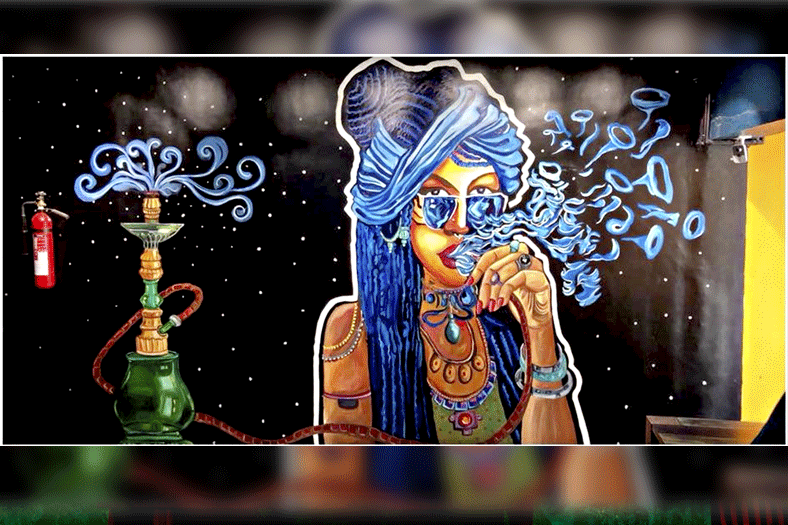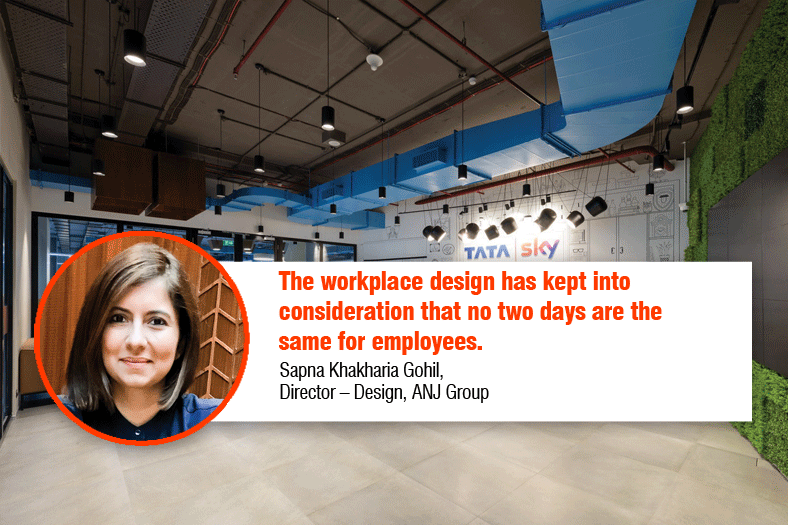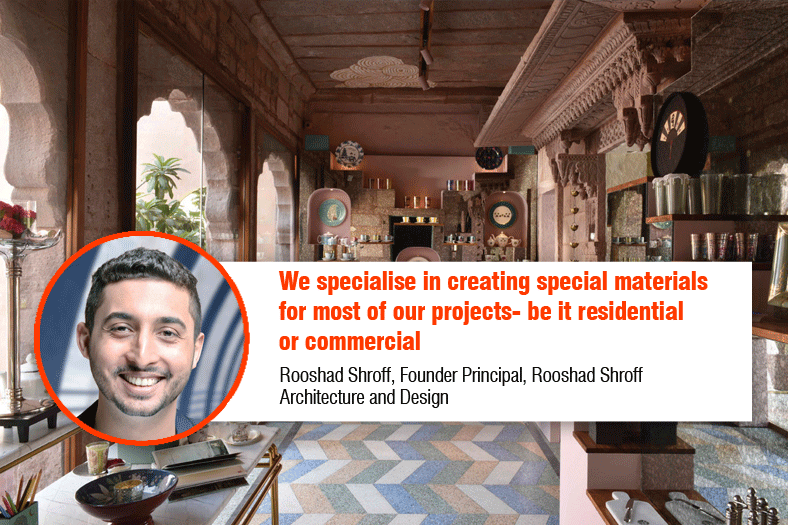
In interior design the design narrative is drafted by the design subsets it encompasses namely floor design, wall design and ceiling design.
The essence of design differs from place to place; it is heavily influenced by the culture and the social fabric of the space in question. And this pretty much influences the entire design scheme. For example the art of calligraphic designs is eminent in Islam and Christianity, whereas the rest of the religions showcase it through its temple designs. In India as also in different parts of the world reign of different kings and monarchs brought into existence different forms of architecture. Along with it came different forms of design, design which influenced the design of the interior spaces including the walls, floors, ceilings and more.
It added an element of exclusivity to the canvas of design. Even today when we check out such spaces many of which are heritage sites, we remain in awe of the design scheme which were creates. Not only were they intelligent and intricate but they were also served practical purposes. The use of materials in such structures is also something which continues to be studied till date. Traditional architecture as also modern architecture also created a scenario where general patterns came into existence. But the foreplay of customization continued. This was evident in royal properties.
Even in the contemporary mode there are properties where minimalism is the key and then there properties which are infused with intricate designs. The designs are spread across walls, floors and ceilings. In properties where the ‘fetch’ (extent to which one can see an uninterrupted floor area) is large, floors become an integral part of the overall experience. It is for this reason that any design on such floors takes in importance. For instance the floors of the Taj Mahal are adorned with patterns that follow a process of ‘repetition’ and ‘reflection’ where precious and semi – precious stones are inlaid to create such geometries. Or for that matter the Humayun’s tomb in Delhi, Red Fort in Agra, Friday mosque at Fatehpur Sikri or the Itimad Ud Daulah tomb all have elaborate geometries.
Though ceilings were usually adorned with intricate wood work and patterns in ancient buildings, palaces and churches, such was not the trend with individual homes. Ceiling trend started in the late 1950s (approx) as a way to finish the project quickly and hide all imperfections. Design of ceiling and its importance is based is on the design of space and the overall volume. It also plays an important role in a space where the walls are given less importance. Ceilings can determine the look and feel of a space it plays a key role in how we feel and interact with a building. It also protects the electrical and plumbing systems etched inside.
Be it floor or ceilings, patterns play and important role in creating the end effect. Then the use of materials also matters. Exquisite patterned mosaics, Intricate inlays in stone, metal, glass and precious to semi precious stones are used to adorn floors in several rich and interesting ways. In addition the ceramic and vitrified tile industry is going through enough advancement that sees the limits of design being pushed endlessly. Textures, shapes, finishes, patterns etc. are being given new form with almost an unimaginable amount of freedom with expression. It’s almost as if one can create or recreate anything they dream up! For ceilings patterns can be created using gypsum boards, drain cells and even lights are utilized to create an end effect.
With the exception of newer materials the designers are in a better position to create landmark floors and ceilings. In the words of Rohit Suraj, Founder & CEO, Urban Zen “I think the options in the ceramic industry are now really allowing designers to push the boundaries with their own interpretation and expression of a space. For me personally a palette that is nude interests me. Our project ‘Sky Full of Stars’ is a great example where muted white concrete floors create a backdrop for an awe inspiring setting.”
Likewise using materials in a quirky way is also in the vogue. For one of their projects J-9 Associates utilised drain cells to design the ceiling to balance the entire environment of the Veneer Display studio. Says Alpesh Mod, Principal Architect, J- 9 Associates “Apart from being aesthetically pleasing the material is also cost efficient 30 Rs/sq.ft in 1120 sq. ft. ceiling area. The 30 mm drain cells provides a uniform surface as well as an internal void space, which is made from recycled polypropylene and is inert to soil borne chemicals and bacteria. While designers and clients are not available in the showroom that time only centre portion light runs. When designer and clients enter into showroom it gives very cool effect with patterned shadow on floor.”
Ceilings are often overlooked but are no less than a crucial design element. Ceiling can have a dramatic visual impact in a space where the simple designs are used. It is something which can add value to the entire design scheme. The installation of false ceiling is great way to camouflage the beams and give a seamless look to the ceiling. False ceiling gives the space a more proportionate look and ensures optimum cooling by air conditioning devices. False ceilings also allows a user to alter the positions of the light points and fan points; it also makes way for concealed general lighting and diffused lighting for the room.
When it comes to material play for ceilings, apart from gypsum boards, drain cells and lights the ceilings can also be draped with veneer, wood, fabric etc. Then there are also options like exposed RCC surface texture and baffle ceiling. Ceilings can also be designed with locally available materials. Even in floors the use of local materials is well accepted. Granite, marble, terracotta, concrete and mosaic floors have and continue to be popular in keeping with the local climatic conditions.
“Akin to a ceiling the wall too is like an empty canvas which has to be filled with the right colours and materials. Paintings can be utilised, bright and bold colours can be used to rev up the design quotient. Options like wall paper and stencilling are also in vogue.” says Alpesh Mod, Principal Architect, J-9 Associates. The custom design solutions for a great wall has also seen the rise in use of materials like paints, veneer, laminates, plywood, wood, metals etc. In projects where the space is confined, mirrors are used on walls to add an illusion of volume. This makes the space appear bigger and brighter. Likewise the use of a huge painting also is a great idea to make a small space appear bigger.
The dynamics of design and its evolution will continue to intrigue us all, as newer materials come into being. The narrative of good design will continue to expand akin to the newer chapters of a popular epic, which we remained oblivious to.
I think the options in the ceramic industry are now really allowing designers to push the boundaries with their own interpretation and expression of a space.
Rohit Suraj, Founder & CEO, Urban Zen
Akin to a ceiling the wall too is like an empty canvas which has to be filled with the right colours and materials.
Alpesh Mod, Principal Architect,J-9 Associates
Cookie Consent
We use cookies to personalize your experience. By continuing to visit this website you agree to our Terms & Conditions, Privacy Policy and Cookie Policy.









